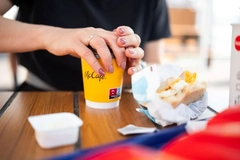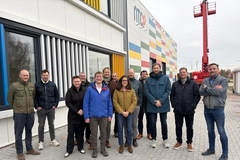Sealed Air upgrades thermoformable food webs to recycle-ready for vacuum and MAP applications
23 Jun 2021 --- Sealed Air is making its range of thermoformable food packaging webs – branded TM-Ply – 100 percent recyclable as it targets a fully recyclable or reusable product portfolio by 2025.
The webs, which are made with polyethylene (PE), have passed “rigorous testing” by the Association of Plastics Recyclers (APR) and Plastics Recyclers Europe (PRE), granting them the RIC4 classification (100% recyclable).
TM-Ply webs are designed for a range of vacuum or modified atmosphere packaging (MAP) applications, including refrigeration, freezing, pasteurization and cooking.
The films are available from 65-400 microns in thickness and widely used to protect smoked, fresh and frozen meats, poultry, fish, cheese and ready meals.
“The advances in the recycle-ready status of TM-Ply have been achieved while maintaining the leading performance the barrier and non-barrier webs are best known for,” says Lisa Roddis, Sealed Air’s business development leader.
 SealedAir has pledged 100% reusability or recyclability in all of its packaging by 2025.“They continue to offer superior toughness and high abuse resistance, as well as excellent formability and sealing. Combining these properties with recyclability creates a total packaging solution that helps reduce food waste and improve sustainability.”
SealedAir has pledged 100% reusability or recyclability in all of its packaging by 2025.“They continue to offer superior toughness and high abuse resistance, as well as excellent formability and sealing. Combining these properties with recyclability creates a total packaging solution that helps reduce food waste and improve sustainability.”
Circular advances
The development of recycle-ready RIC4 thermoformable webs follows Sealed Air’s recent launch of the world’s first RIC4 coded standard and premium shrink bags.
“The technological advances in TM-Ply form part of Sealed Air’s Sustainability and Plastics Pledge 2025. This involves accelerating the use of recycled materials and is designed to create modern packaging solutions that support companies in their efforts to be more resourceful and to reduce carbon emissions,” continues Roddis.
This year, Sealed Air created LID830R – another addition to the company’s Cryovac brand – also suitable for a range of thermoforming applications.
In contrast to THF materials’ traditional heaviness, the LID830R is 33 microns thick.
The company says this NPD forms an essential part of its 2025 pledge strategy. The three core principles are:
- Invest in Innovation: Design and advance packaging solutions to be 100 percent recyclable or reusable.
- Eliminate plastic waste: Achieve a target of 50 percent average recycled content across all packaging solutions, of which 60 percent is post-consumer recycled content (PCR).
- Collaborate for change: Lead collaborations with partners worldwide to increase recycling and reuse rates.
Sealed Air has also become a signatory of the New Plastics Economy Global Commitment.
Flexible recycling challenges
Despite product innovations such as the recyclable TM-Ply, waste management and collection issues are hindering industry efforts to improve environmental sustainability standards for flexible plastics.
This year, CEFLEX issued a paper emphasizing that the collection of flexible packaging waste is central to achieving a circular economy in Europe.
This followed a “breakthrough” design process created by the consortium, labeled the Quality Recycling Process, made in collaboration with CEFLEX’s New Sustainable End Markets workstream to create valuable resources from used polymers.
In the UK, producer compliance scheme Ecosurety and environmental charity Hubbub recently launched The Flexible Plastic Fund, a UK industry initiative to make flexible plastic recycling economically viable for recyclers and easier for consumers.
The Fund received an initial £1 million (approximately US$1.4 million) in backing from Mars UK, Mondelēz International, Nestlé, PepsiCo and Unilever. The Fund intends to improve flexible plastic recycling and reduce plastic pollution by giving the material a stable value.
By Louis Gore-Langton












